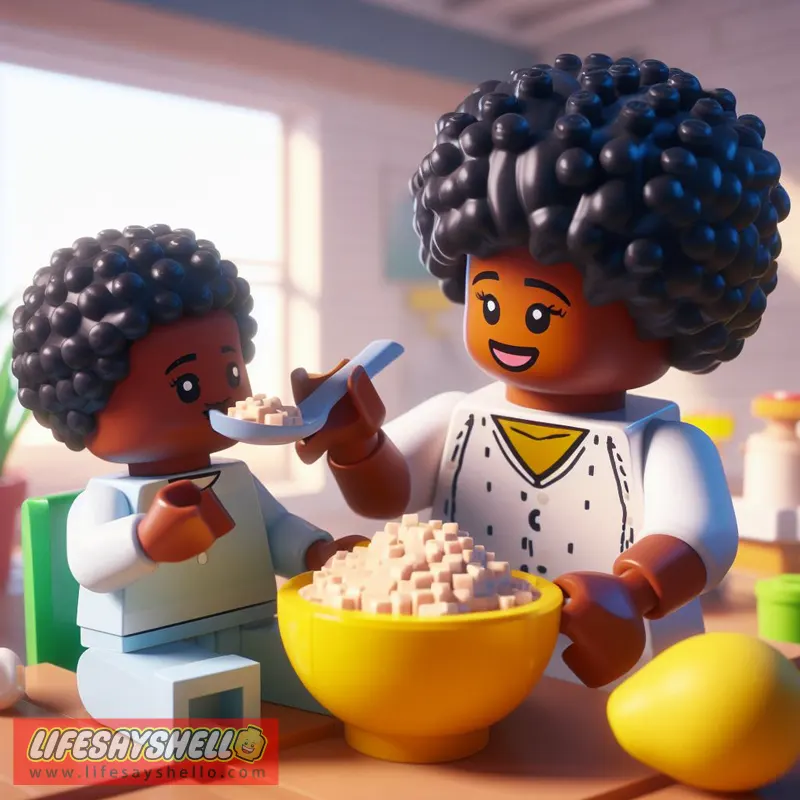A Complete Guide to Feeding Your 6-9 Month Old Baby

Starting solids is an exciting milestone in your baby’s life! Around 6 months, your little one will be ready to begin exploring new tastes and textures. By 9 months old, your baby should be eating a wide variety of family foods from all food groups.
Read on for a complete guide to feeding your 6-9 month old, including when and how to introduce first foods, sample meal plans, and tips to make this transition smooth sailing!
When to Start Solids with Your 6 Month Old
According to UNICEF, the ideal time to introduce solids is when your baby is around 6 months old. At this age, your infant’s digestive system has matured enough to handle more than just breastmilk or formula. Their tongue thrust reflex has diminished, making it easier for them to move food to the back of their mouth for swallowing. Plus, starting solids at 6 months may help prevent food allergies down the road.
So how do you know if your 6 month old is ready for solids? Signs include:
- Good head and neck control
- Ability to sit upright with support
- Loss of tongue thrust reflex
- Interest in food and watching you eat
If your baby seems eager to reach for your food and is ready to take in more than just breastmilk or formula, it’s likely time to start introducing some simple solid foods. The key is to start slowly and pay close attention to your baby’s cues.
According to recommendations from UNICEF, your 6 month old should start with about 1/2 cup of soft food, offered 4 times per day. This can include purees like:
- Whole grain baby cereal mixed with breastmilk or formula
- Mashed avocado
- Avocado and pea purees
- Applesauce
- Mashed sweet potato
- Prunes or pears for constipation
Focus on single ingredient foods at first to check for any signs of allergies or intolerances. Offer solids after a breast or bottle feeding so they still get the bulk of their nutrition from breastmilk or formula at this stage. Go slowly and let your baby explore new textures and flavors at their own pace.
Expanding Your Baby’s Diet at 9 Months
By the time your baby reaches 9 months old, they’ll be eating a much wider variety of foods. Their digestive system has matured even more, their oral motor skills are developing, and they have the coordination to handle more textures. Now is the time to introduce lumpier purees, mashed foods, and even some soft finger foods.
So what should a 9 month old baby eat in a day? At this age, your baby needs around 750-900 calories per day. Ideally, 400-500 of those calories should still come from breastmilk or formula since this provides complete nutrition. The remaining calories can come from solid foods across all food groups.
Here are some soft foods commonly included in a 9 month old’s diet:
- Dairy: Full fat yogurt, cheese cubes
- Grains: Oatmeal, baby cereal, mashed pasta, small pieces of toast
- Fruits: Mashed banana, peeled pear slices, steamed apples
- Veggies: Well-cooked green beans, carrots, sweet potatoes, winter squash
- Proteins: Tofu cubes, chicken, beef, pork, beans, eggs
- Finger foods: Teething crackers, strips of toast
You can puree or mash these foods or offer tender pieces for baby to self-feed. Vary textures from smooth to lumpy to help your baby adapt. Offer 2-3 meals per day plus 1-2 small snacks, like teething crackers or fruit.
Don’t worry if your baby’s intake seems to decrease when you introduce chunkier textures. This is normal as babies learn to chew better. Keep offering a variety of flavors and textures to prevent pickiness. Continue breast or bottle feeding on demand to ensure they get adequate nutrition.
Sample Meal Plans for Your 6-9 Month Old
Wondering what to actually feed your baby for breakfast, lunch and dinner? Here are some simple meal ideas to get you started:
Breakfast
- 6 months: Rice cereal mixed with breastmilk or formula, mashed banana
- 9 months: Whole grain cereal, yogurt with mashed fruit, scrambled egg
Lunch
- 6 months: Avocado puree, sweet potato puree
- 9 months: Ground meat and veggie puree, small pieces of soft pasta with sauce, steamed vegetable sticks
Dinner
- 6 months: Butternut squash puree, green bean puree
- 9 months: Tofu cubes, quinoa, roasted broccoli florets
Snacks
- 6-9 months: Mashed fruits like banana, avocado or pear, teething crackers or toast strips, mesh feeder with frozen fruit or veggies
Mix and match these ideas while gradually introducing new foods. Offer one new food at a time and watch for reactions. Let your baby set the pace. Keep mealtimes relaxed and fun!
Tips for Transitioning to Solids Successfully
The key to starting solids is taking it slow and following your baby’s lead. Here are some tips to make this transition smooth:
Start with a small amount - Just 1-2 teaspoons at first. Increase gradually over days/weeks.
Offer solids after a milk feeding - This ensures baby still gets enough breastmilk/formula.
Respond to hunger cues - Watch for lip smacking, hand to mouth movements, getting excited at mealtimes.
Don’t force it - If baby closes mouth or turns head away, they may not be ready. Try again later.
Focus on exploration - Playing and touching foods helps babies get used to new textures.
Give baby control - Let them grab food and feed themselves to build confidence.
Don’t worry about the mess! - Mealtimes can get messy as baby learns. Relax and enjoy this chance to explore.
Offer a variety - Rotate multiple single-ingredient foods to prevent pickiness.
Watch for reactions - Allergies are rare but pay attention after introducing new foods.
Avoid added salt and sugar - Stick to naturally sweet foods like fruits and veggies.
Remember milk feedings - Breastmilk or formula should still make up a large part of baby’s nutrition.
The first year is an amazing time of growth and discovery. As you begin introducing solids, go slowly and trust your baby’s signs. With time and exposure, they will become a confident eater. Reach out to your pediatrician if you have any concerns. Most of all, relax and enjoy making memories together at mealtime!
Conclusion
Starting solids is a major milestone on your baby’s journey to big kid eating! Around 6 months, slowly introduce purees as recommended by UNICEF and your pediatrician. Move towards mashed foods and finger foods as baby approaches 9 months old. Offer a wide variety of flavors and textures to set them up for a lifetime of happy, healthy eating.
Trust your instincts and your baby’s cues. With patience and creativity, this can be a fun adventure for both of you!




Comments